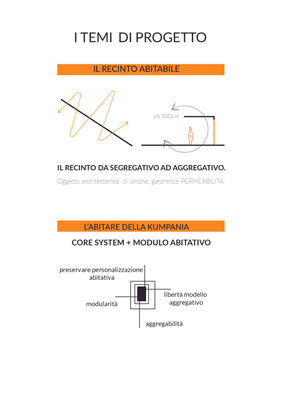top of page

InKumpania | in the suburb of the suburb
Student: Maria Fierro
Supervisor: Professor Arch. Paola Scala
Co-Supervisors: Professor Arch. Maria Cerreta - Raffaele del Giudice (assessore all'ambiente)
InKumpania talks about the residual spaces of the contemporary cities and the integration of ethnic minorities living in Italy. The master’s degree looks at the informal city as a new way to activate an urban regeneration of the residual spaces, where this ethnic groups live. Learning from the informal… The project hypothesis elaborated,developed with the Municipality of Naples, works on two levels, the "material" one aimed at reducing the physical and environmental degradation of this resisual area; and the "immaterial" one that aims to reuce the socio-spatial exclusione and the marginal conditions of settled community.
This work looks at the informal city and particularly focuses on the main aspects and potentialities of this urban structure in Italy. Europe has been examinating Italy for many years about the ineffectiveness of solutions adopted to integrate some communities, such as the gypsy community, that still live in camps. These structures do not represent an appropriate living conditions and radicalize the isolation of the marginal social group. But, as Antonio Tosi wrote, the camp rapresents also a structure of social and cultural relations and a living idea different from the apartment building. The camp represents…an idea of community. The same idea is typical of some parts of the city where, because of economic and urban reasons, specific ethnic groups take up residence. It’s possible to hypothesize alternative processes of urban regeneration starting from the observation of the spontaneous dynamics of the informal part of the city, considering the possibility to accept new models of inhabiting, new ideas of public space and different urban models that, perhaps, are closer to the main aspects of the place where they decided to take up residence or where they have been confined. The junkspace become, in informal way, a place for the marginalized communities. The architectural project of urban regeneration can, therefore, work on more levels, as shown in the Scampia’s case study “Cupa Perillo Gipsy camp”: from the spatial and architectural aspects, such as the redefinition of a margin of the suburb, can start on one hand processes of economical, spatial and social regeneration, and, on the other hand, mechanisms of inclusion. The residual space can be seen as the occasion to generate alternative urban models designed to requalify, reuse, regenerate and give a new meaning to themselves.
bottom of page


















